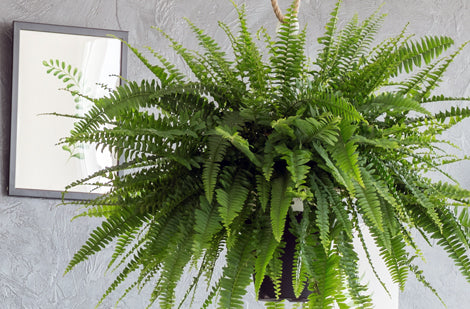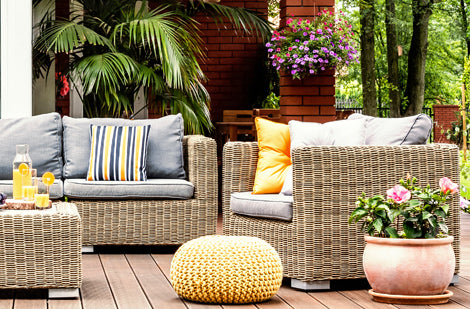Monstera adansonii
Swiss Cheese Monstera
Swiss Cheese Monstera
Exposure
- Intense-moderate, without direct sun
Rusticity
- Leaves with holes
- Small monstera
- Climbing
- Easy care
- Toxic
Monstera adansonii, often nicknamed "Monstera Monkey Mask" or "Swiss Cheese Plant", is a tropical climbing species highly appreciated for its unique foliage and ease of care. The holes of varying sizes in its leaves, along the central vein, let light through to illuminate the lower leaves. It is a climbing plant with thinner and more flexible stems than the Monstera deliciosa, allowing it to easily adapt to any type of support.
Main features:
- Flowering: Indoors, flowering is rare. In its natural habitat, it produces white flowers in the form of a spathe.
- Foliage: Its glossy dark green, heart-shaped leaves are perforated with holes of varying sizes, giving it the appearance of a monkey mask or a piece of Swiss cheese. The perforations increase in number with the age of the plant.
- Habit: Naturally climbing, it can be trained on a moss pole or placed in a hanging pot, creating a beautiful effect.
- Growth: Moderate to fast, especially during the active growth period (spring-summer) and in optimal light and humidity conditions.
- Care: Relatively easy, it is well suited for beginners. It prunes well to maintain a denser, bushier habit. Long, bare stems can be cut back.
Growing information:
- Light: It appreciates bright indirect light. It tolerates lower light, but growth will be slower and the leaf perforations less numerous. Avoid direct sunlight, which can burn its leaves.
- Soil type: A well-draining potting mix for houseplants, rich in organic matter, is ideal.
- Watering: Water when the top few inches of soil are dry to the touch. It prefers slightly moist but not soggy soil. Avoid overwatering, which can cause root rot.
- Fertilizing: Apply a balanced liquid fertilizer for green plants once a month during the growing season (spring and summer).
- Temperature and humidity: Prefers warm temperatures between 18-27°C (64-80°F). It appreciates high humidity but tolerates average indoor humidity. Mist the leaves regularly or use a humidifier to increase ambient humidity.
- Repotting: Repot every 1 to 2 years in the spring, into a slightly larger pot, when the roots start to come out of the current pot.
Plant details
Dimensions
Dimensions
Characteristics
Characteristics
Habit:
- Climbing
Flowering colours:
- White
Plant needs
Plant needs
Watering:
- When the top 2 inches are dry
Maintenance:
- Easy
Soil requirement:
- Well-drained, potting soil for tropical plants
Features
Features
Resistance:
Attract:
Use:
- Pot
- Hanging pot
- Terrarium
- Patio pot
Attribute:
- Hole-filled leaves
Related articles
-

Potting House Plants: which pot to choose
Read the articleBien qu'une plante puisse passer plusieurs mois et parfois même plusieurs années dans le même pot, avec le temps ses racines envahissent tout l'espace disponible. Il devient important de choisir...
-

African violets
Read the articleMembre de la famille des gesnériacées, la violette africaine offre une floraison abondante et continue à qui sait respecter ses besoins culturaux. Ses fleurs, aux formes diverses et aux couleurs...
-

The Complete Guide to Buying and Caring for Ind...
Read the articleBringing a touch of nature to your home with plants is a great idea! Not only do they beautify your living space, but they also help purify the air. However,...
-

Make your own terrarium
Read the articleVous avez envie d’ajouter un peu de verdure à votre intérieur, mais n’avez jamais eu le pouce vert? Facile à réaliser, peu coûteux et nécessitant un entretien minime, le terrarium...
-

Create a garden with succulents
Read the articleLes plantes grasses n’ont pas leur pareil pour créer des arrangements à la fois impressionnants par leurs couleurs, leurs formes et leurs textures et faciles à entretenir. Qu’on les agence...
-

Houseplants to discover - Butterfly Palm or Are...
Read the articleDypsis lutescens, anciennement Chrysalidocarpus lutescens
-

-

-

Houseplants to discover - Madagascar Dragon Tree
Read the articleDracéna de Madagascar ou Dracaena marginata
-

-

Houseplants to discover - Ferns
Read the articleDivers noms botaniques, dont Nephrolepis exalata (fougère de Boston), Davallia fejeensis (fougère patte de lapin), Asplenium nidus (fougère nid d’oiseau), Platycerium bifurcatum (fougère corne d’élan) et beaucoup d’autres.
-

-

-

Snake Plant: The Unkillable Houseplant, Perfect...
Read the articleThe Snake Plant is an ideal houseplant for everyone, whether you're a beginner or an experienced gardener. Its resilience, ease of maintenance, and decorative appearance make it an essential choice...
-

Edible Flowers: Top 5 for Garden and Kitchen
Read the articleOffrant une belle gamme de couleurs, de formes et de textures, les fleurs comestibles enthousiasment les amoureux de jardinage et de cuisine.
-

Tropical Flowering Plants: A touch of the exoti...
Read the articleLes plantes tropicales à fleurs ont tout pour faire tourner les têtes! Colorées, odorantes, généreuses, elles n’ont pas leur pareil pour égayer une aide de repos, un balcon, une terrasse....
-

Keep a palm tree on the terrace - why not!
Read the articleDifficile de résister à l’appel des tropiques quand le soleil et les températures clémentes se pointent le bout du nez. Rien de mieux qu’un palmier sur la terrasse ou le...
-

Bringing Outdoor Plants Indoors for the Fall
Read the articleThe arrival of autumn, with its cool nights, announces the time to bring some plants inside to protect them from frost. However, don't rush. Let's enjoy the last beautiful sunny...
-

When and how to repot house plants
Read the articleAlthough a plant can spend several months and sometimes even several years in the same pot, over time its roots invade all the available space.
-

How to select the best houseplant potting soil
Read the articleIl est important d'adapter le substrat utilisé au type de plante. Plusieurs mélanges sont possibles à partir de terre brune, de mousse de tourbe, de perlite ou de vermiculite. Pour...



































